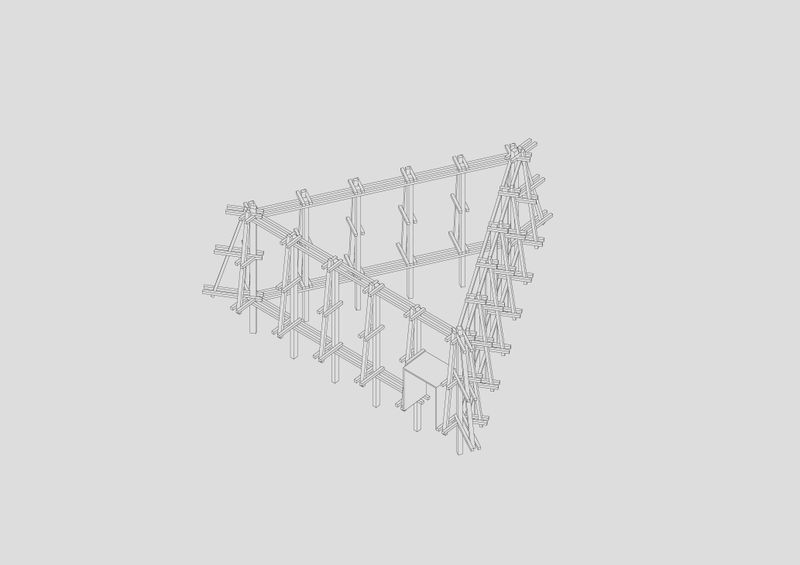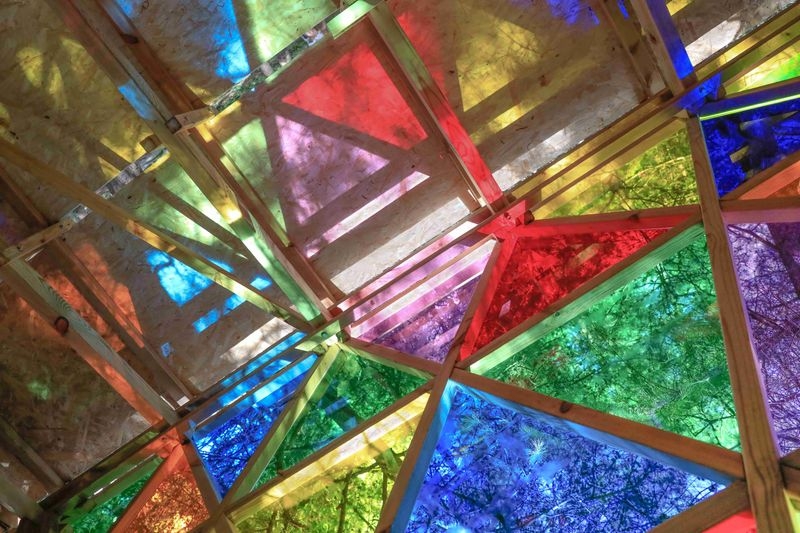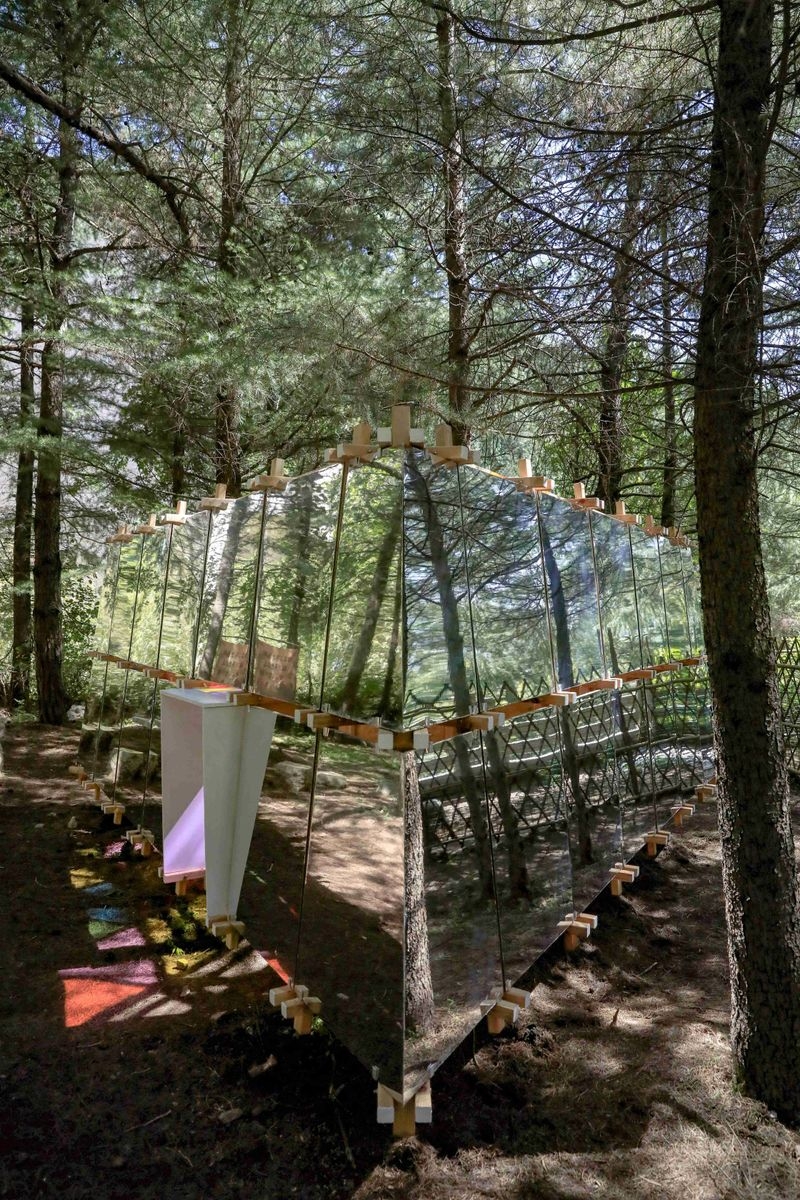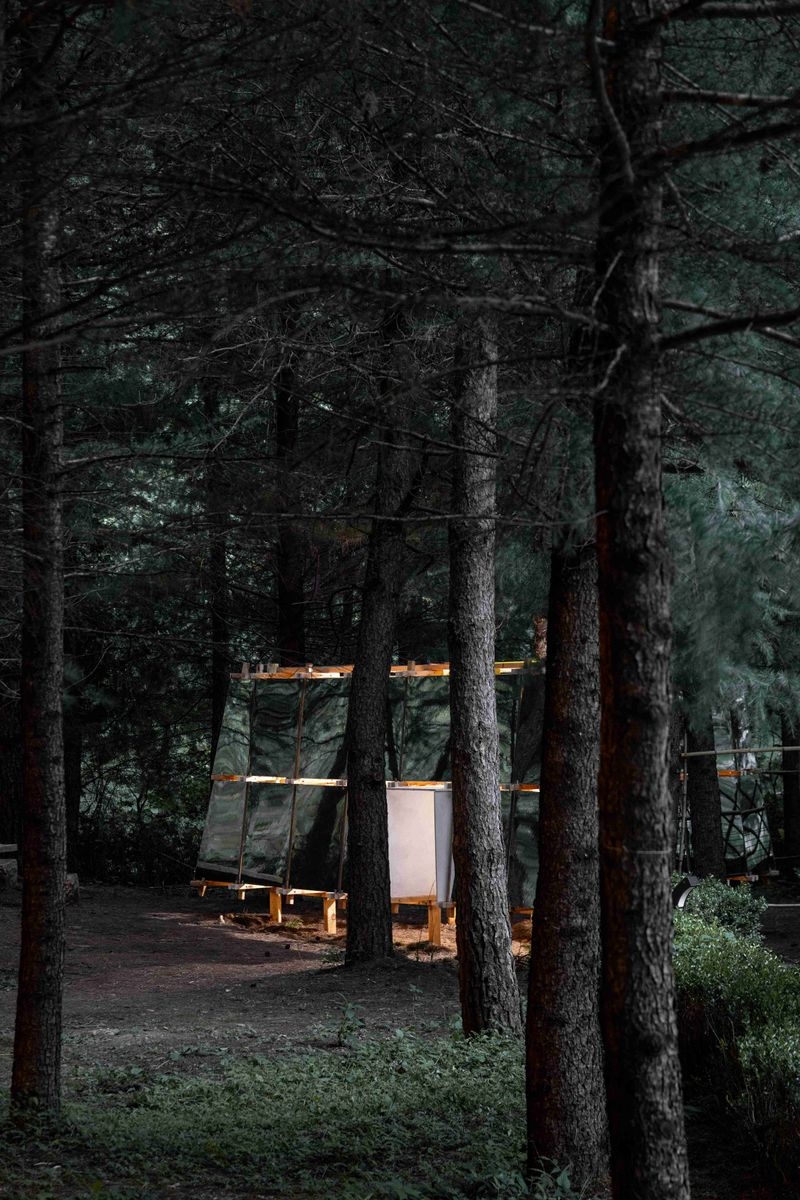補足資料








PROJECT MEMBER
Amidst the skyscrapers of the city, everyone often feels enclosed by the embrace of concrete and steel. Even when venturing a hundred kilometers away from the urban center to a remote mountain hotel, you can still sense the presence of the urban environment. But when you step into this small pavilion made of shimmering colored mirrors, everything changes. Hidden in a grove of pine trees, this space seems to have a kind of magic, allowing you to unknowingly reconnect with nature. The multicolored pavilion feels like a treasure hunt in the heart of the forest.The initial concept was inspired by the awe people feel when they see a rainbow—the natural beauty of its seven colors. And so, this pavilion was born with a touch of kaleidoscopic wonder. We chose a pine forest as the site, with the shape of the pavilion determined by the natural growth patterns of the trees. The triangular structure adapts to the limitations of the forest, taking on no fixed form but rather extending freely along the lines of the trees. From afar, the pavilion blends seamlessly into the environment, and only when you get closer can you notice the reflection of the forest on its mirrored surface. When you step inside, the ceiling is a patchwork of colorful triangular skylights. Sunlight streams through the branches and colored glass, casting ever-changing patterns on the ground as time passes. During the bright afternoon hours, the entire space takes on a dreamlike quality, as if you’ve entered another world. The structure is entirely exposed, with every beam and support visible, yet this transparency and openness doesn’t feel cold or harsh. Instead, it enhances the connection to the surrounding environment. The play of light and shadow makes you feel momentarily untethered from time, leaving only the flowing nature and your immersed state of mind. The mirrored exterior doesn’t directly reflect people but subtly captures the surrounding trees, light, and shadows, presenting a fragmented forest scene. The mirrors follow the undulations of the pine forest, floating 30 to 50 centimeters above the ground, making the entire structure seem to hover within the dense woods. As you approach, you suddenly become aware of the building’s presence, but it doesn’t feel like an external imposition; instead, it feels like a part of nature itself, silently concealed among the trees. This idea of “disappearing architecture” challenges the conventional dichotomy between buildings and nature, making the pavilion seem as though it grew within the forest rather than being placed there by human hands. As you leave the shimmering pavilion, you may feel something strange: it’s as if you’ve just experienced a release and purification from the city. A long-lost sense of childlike wonder and curiosity is reawakened in the forest. In the overwhelming spaces of cities, people are used to feeling the oppression of architecture, but in this hidden space, filled with colorful light and shadow, your mindset is gently opened up, revealing a deeper understanding of nature. Perhaps this is the message the Pavilion of Shimmering Colors hopes to convey: we are not the masters of nature, but a small part of it, coexisting within its vastness.
